No doubt, PCOS can affect women’s health and reduce the chances of getting pregnant. Luckily, there are many ways that can be used to treat polycystic ovaries, including hormonal drugs, diets, and also you can use aerobic exercises for PCOS belly, which will be our main subject in this article.
Polycystic ovaries syndrome is a common hormonal disorder in women that causes certain problems in the ovaries that cause the egg to not develop properly or release during ovulation.
Polycystic ovaries have several symptoms, including menstrual irregularities, hair growth on the face, chest, and thighs, the appearance of acne, infertility, and weight gain.
There is no permanent cure for PCOS, but prevention can be the best and most appropriate solution to avoid its symptoms and complications.
Thanks to proper nutrition and weight control, many women with PCOS can avoid the development of diabetes and cardiovascular problems.
Check out:
- List of fruits good for PCOS
- The worst foods for PCOS
- 7-day PCOS diet plan pdf
- PCOS carbs per day; How to Eat On PCOS
- Can PCOS cause weight loss
- PCOS and ketogenic diet
- The Best PCOS Diet Plan To Lose Weight
Check out our latest posts:
- Is Going to Bed Hungry On Intermittent Fasting Normal?
- Craving Sweets on Carnivore Diet: Tips to Curb Your Sweet Tooth
- 23 Top Carnivore Diet Snacks: Easy, and Satiating Options
- Pollotarian Diet: A Balanced Approach to Healthy Eating
- Intermittent Fasting for Teens: A Guide to Healthy Practices
Best Exercises for PCOS belly
Moderate and regular exercise and activities help mitigate the effects of polycystic ovaries and reduce its complications:
First exercise
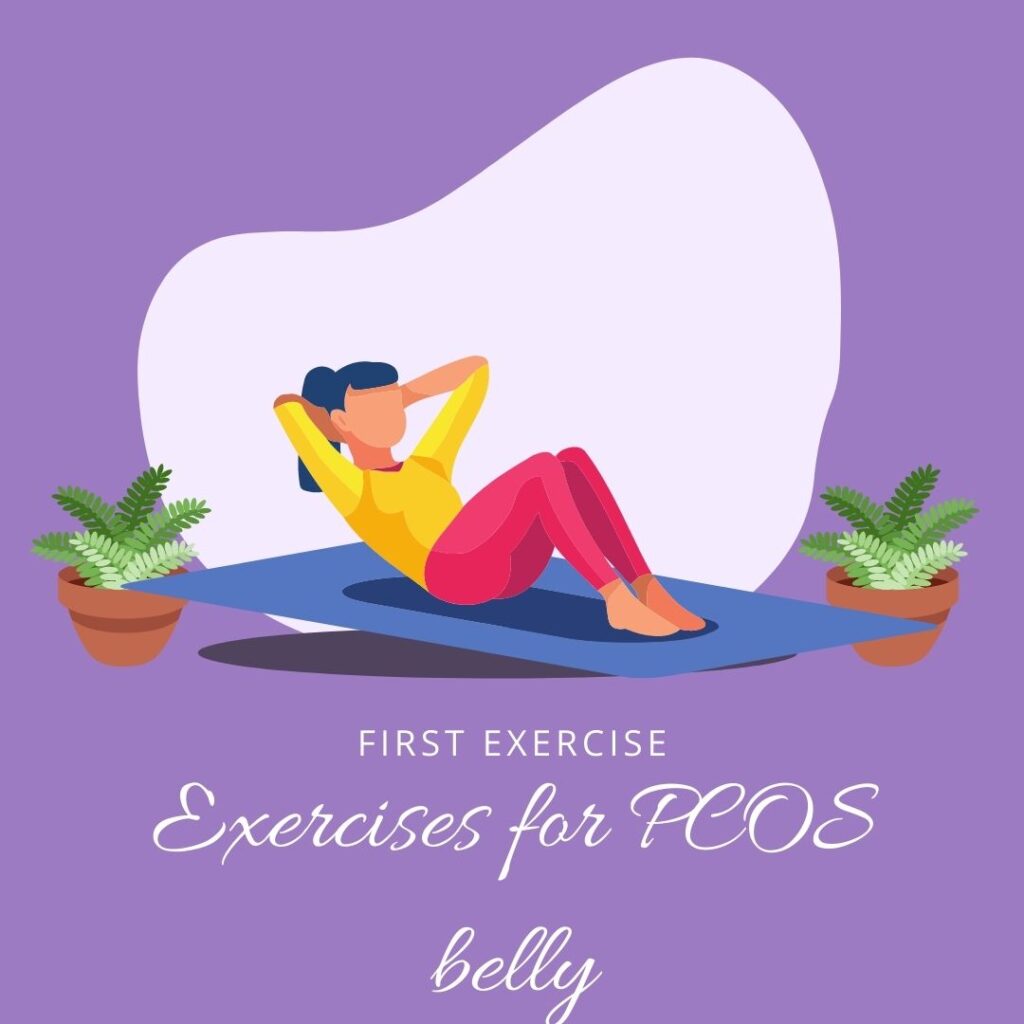
- Sleep on your back on the floor with your knees bent in the shape of a triangle and your hands next to your body.
- Lift your body, resting on your feet, so that your body is completely tightened from the chest to the knees.
- Return to the starting position and repeat this exercise 25 times.
Second exercise
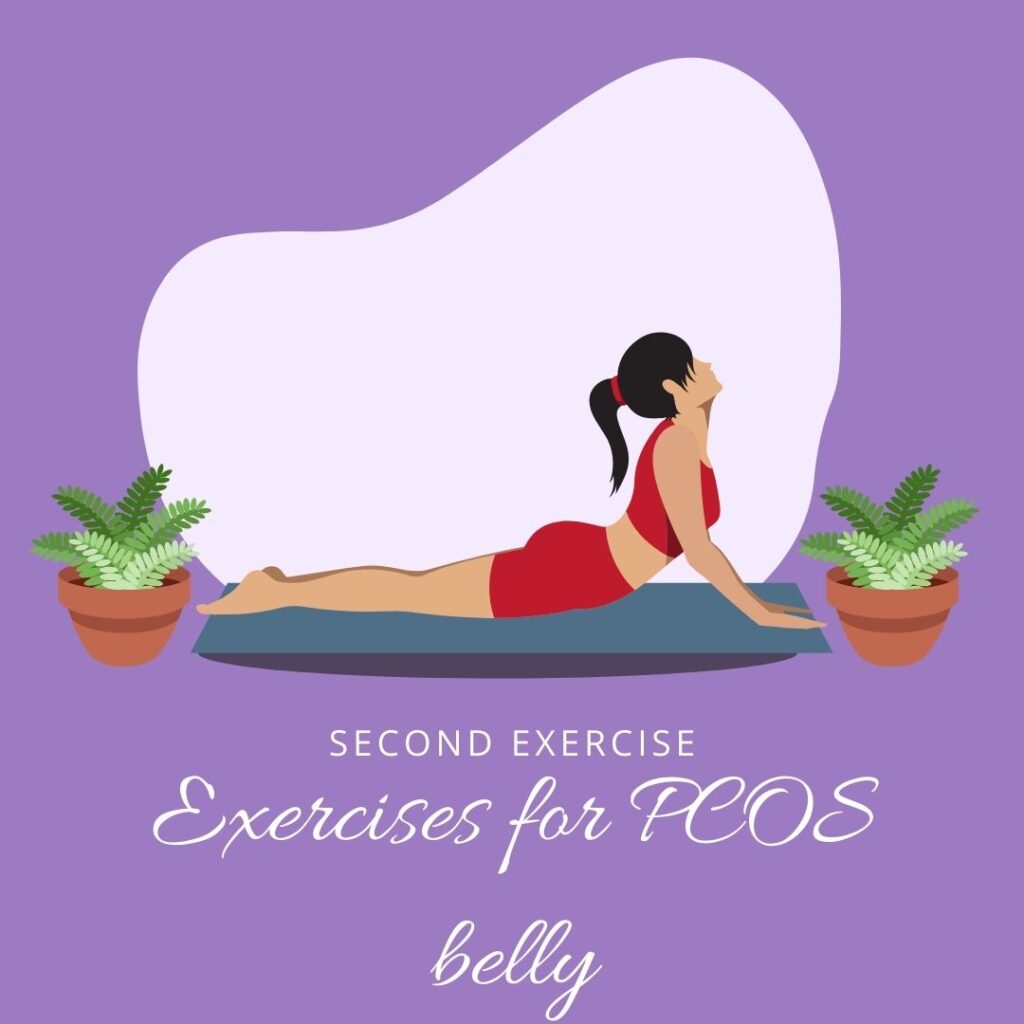
- Sleep on the floor on your stomach.
- Put your palms on the floor and your elbows bent.
- Lift your body off the floor and keep your hands tight while keeping your belly tight.
- Return to the starting position.
- Repeat this exercise 25 times.
Third exercise
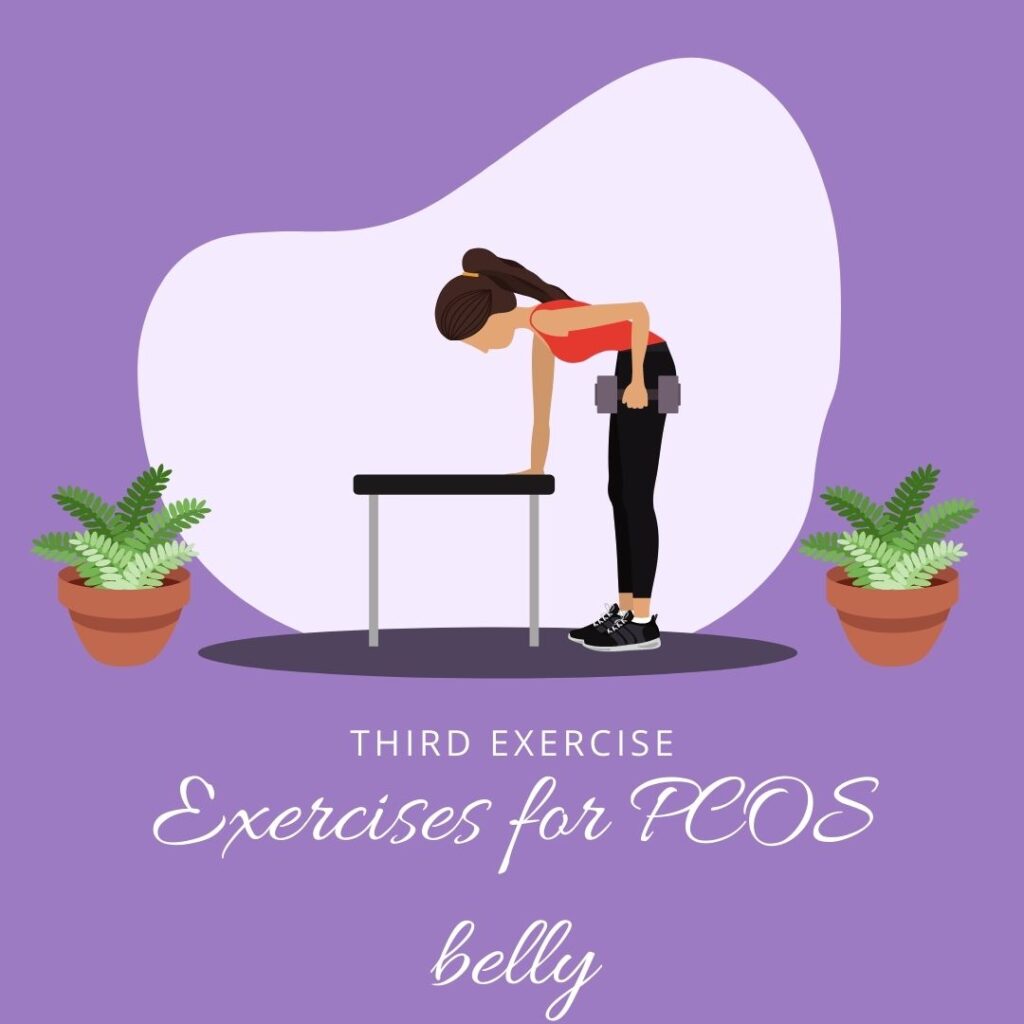
- Standing in front of a high table.
- Stand on the table with your hands while keeping your arms tight and your feet firmly on the floor.
- Start doing push-ups in this position, pressing your chest to the table as much as you can, and then return to the starting position.
- Repeat this exercise for 25 times.
Fourth exercise
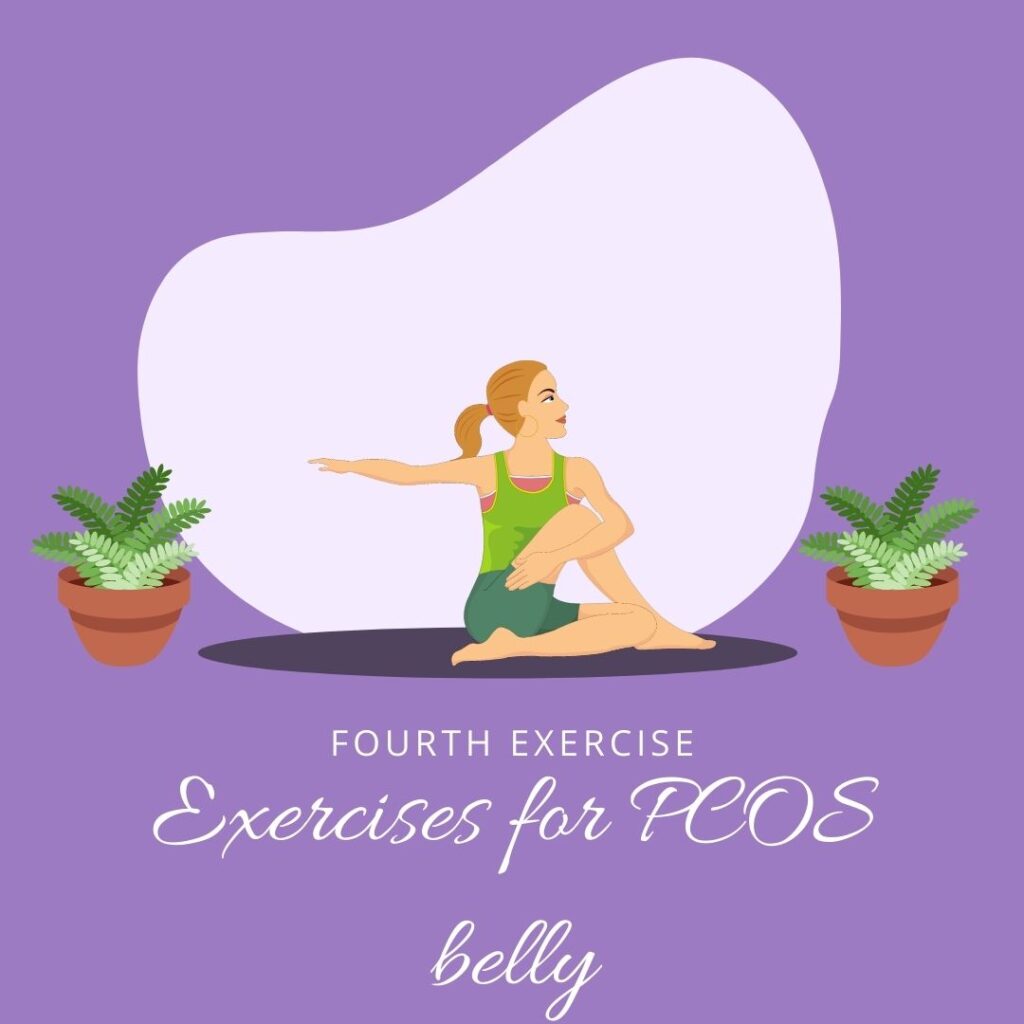
- Sit on the floor with your legs bent below you and close to each other facing to the right.
- Turn your torso to the left side.
- Return to the starting position.
- Repeat this exercise 25 times, then change the position of your legs and rotate your torso to the right side in this case and repeat another 25 times.
Fifth exercise
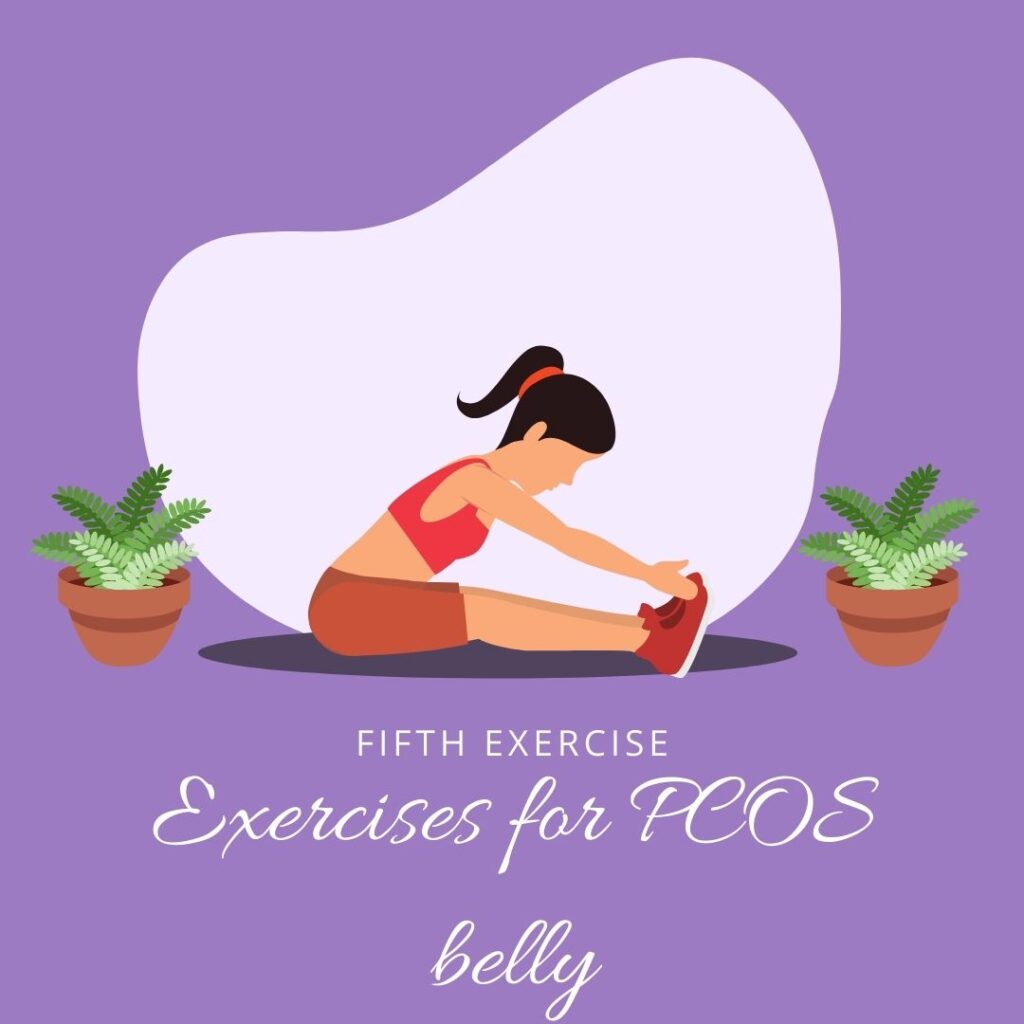
- Sit on the floor with your legs outstretched in front of you, and your hands next to your body.
- Lower your torso and extend your arms until your chest is completely in contact with your knees.
- Return to the starting position.
- Repeat this exercise 25 times.
Sixth exercise
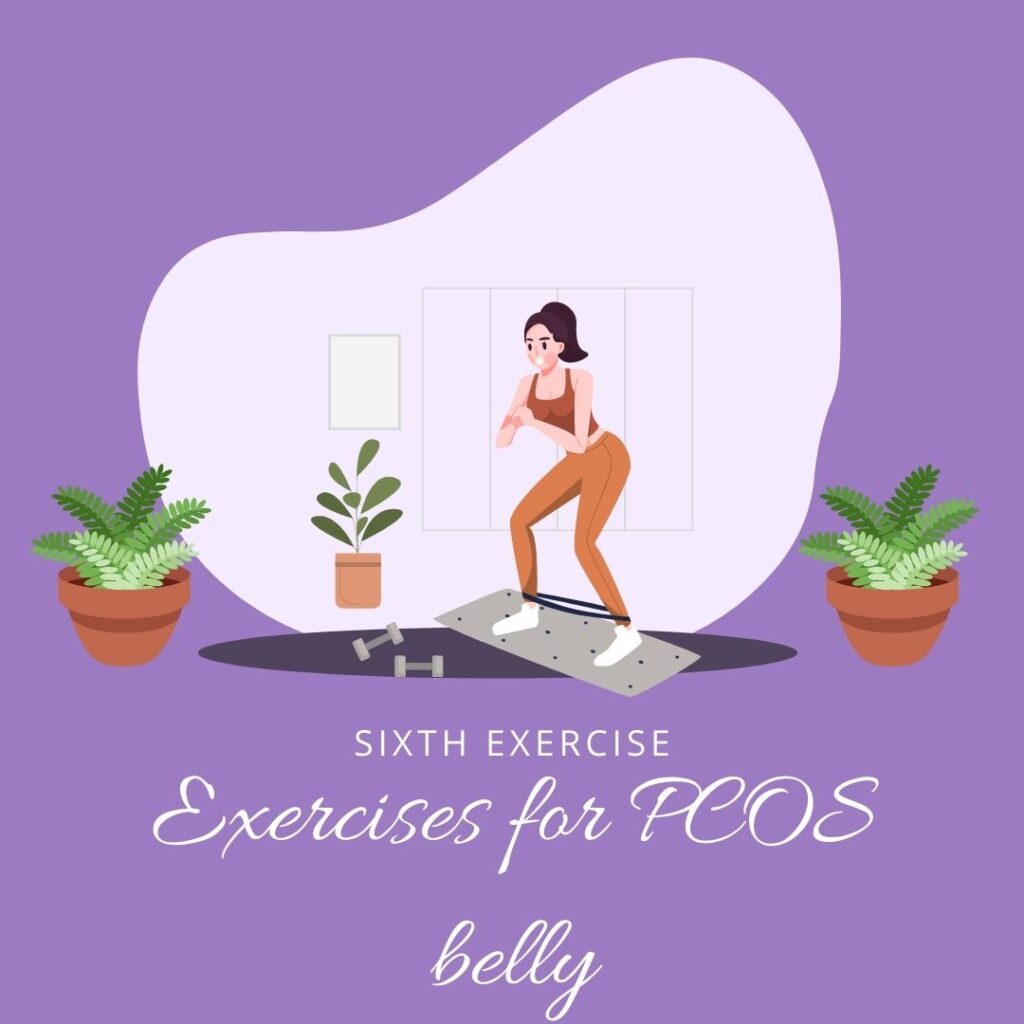
- Stand with your feet apart at the same distance between your shoulders.
- Hold in your hands a weight in the form of a ball.
- Lower your body as if you were sitting on a simulated chair.
- Pay attention to what your knees pass in front of your toes.
- Get up again and return to the starting position.
- Repeat this exercise for 25 times.
How does PCOS belly look like?
The hormonal disturbance causes weight gain and increases fat storage, especially in the lower abdomen. Therefore, women suffering from PCOS may notice their belly is larger especially on the lower side. So, even that you may not be that obese, you still have a stubborn belly that messes up your shape in beautiful dresses.
However, you may camouflage that problem by wearing a corset, or belts that hide your belly under clothes. Still, that is not a permanent solution, as you will need to treat PCOS to get rid of that PCOS belly forever.
Other changes include oily skin, acne, dark spots, and thickening of the skin, especially in the neck and armpits. Also, hair growth in unusual places such as on the face, chest, or thighs’ belly shape.
How to reduce PCOS belly shape
- Maintain a healthy weight. Check out your BMI to know your perfect body weight.
- Limit your intake of foods high in carbohydrates and low in fat.
- Regular physical activity.
- Follow up regularly with your doctor.
- Be sure to take all prescribed medications.
- Quit smoking if you smoke.
Exercise for PCOS to get period
Exercises can accelerate getting menstrual periods, because of what many women suffer as a result of the retention of menstrual blood, and not go down, and the pain that accompanies the delay in the descent of the menstrual cycle, and psychological effects like confusion and anxiety, which improves by sticking to some exercises.
For other tips check out How To Get Periods Immediately In PCOS
There are many exercises that help women in menstruation, like:
- Dancing
Dance is a woman’s movement that is consistent with certain rhythmic or musical tones.
Besides that it’s joyful and refreshing, it helps increasing blood flow in the body, activating blood circulation, which increases the speed of onset of menstruation in women.
- Yoga
Yoga is the most popular sport known for its role in self-soothing, and rid the person of all the anxiety and stress that experience him, and give him a sense of comfort, relaxation because all these reasons can be psychoactive substances that hinder the process of menstruation in time.
- Sport cycling
Doing this sport works greatly to keep the body in shape, by removing excess weight, especially from the upper leg area, it also increases the strength of the foot muscles, increases the blood flow inside the body, which helps with the descent of menstruation, and it is also greatly beneficial to reduce the pain that is caused by menstruation.
- Walking sport
This sport is one of the easiest sports to practice, and although it is easy, it has many advantages if it is regularly practiced daily, including the descent of the menstrual cycle to its own appointment.
